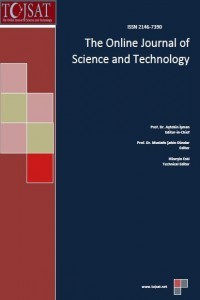Global Stability and Settlement of Segmental Retaining Walls Reinforced with Geogrid
Global Stability and Settlement of Segmental Retaining Walls Reinforced with Geogrid
Prediction, Segmental retaining wall Geogrid, FEM, RSM,
___
- Chiu, H.K. (1987). Reinforced Earth Wall in Malaysia, 9th Southeast Asian Geotechnical Conference, Bangkok, pp 8/121 - 8/138.
- Yoo, C. & Kim, S.B. (2008). Performance of a two-tier geosynthetic reinforced segmental retaining wall under a surcharge load: full-scale load test and 3D finite element analysis. Geotextiles and Geomembranes 26 (6): 460–472.
- Zhang, M.X., Zhou, H., Javadi, A.A. & Wang, Z.W. (2008). Experimental and theoretical investigation of strength of soil reinforced with multi-layer horizontal–vertical orthogonal elements. Geotextiles and Geomembranes 26 (1): 1–13.
- Skinner, G.D. & Rowe, R.K., (2005). Design and behaviour of a geosynthetic reinforced retaining wall and bridge abutment on a yielding foundation. Geotextiles and Geomembranes 23 (3): 234–260.
- Al, H.O. & Muhunthan, B. (2006). Numerical procedures for deformation calculations in the reinforced soil walls. Geotextiles and Geomembranes 24 (1): 52–57.
- Edgar, T.V., Puckett, J.A. & D’Spain, R.B. (1989). Effects of geotextiles on lateral pressure and deformation in highway embankments. Geotextiles and Geomembranes 8: 275–292.
- Faisal, H.A. 1993. Field Behaviour of a Geogrid-Reinforced Slope. Journal of Geotextiles and Geomembranes. 12: 53-72.
- Wong, K.S., Broms, B.B. & Chandrasekaran, B. (1994). Failure modes at model tests of geotextile reinforced wall. Geotextiles and Geomembranes 13 (6–7), 475–493.
- Ho, S.K. & Rowe, R.K. (1996). Effect of wall geometry on the behavior of reinforced soil walls. Geotextiles and Geomembranes 14 (10): 521–541.
- Kasa, A. & Ali, F. (1997). Reinforced Modular Block Wall with Residual Soil as Backfill Material. Geotropika ’97, Johor Bahru, Malaysia, pp 425 - 431.
- Bathurst, R.J., Allen, T.M. & Walters, D.L. (2005). Reinforcement loads in geosynthetic walls and the case for a new working stress design method. Geotextiles and Geomembranes 23 (4): 287–322.
- Ingold, T.S. (1982). Reinforced earth. London: Thomas Telford Ltd.
- Kasa, A. (1998). Field behaviour of a reinforced modular block wall with a residual soil as backfill. Msc. Thesis. University of Malaya, Kuala Lumpur.
- Holtz, R.D. (2001). Geosynthetics for soil reinforcement. Ninth Spencer J. Buchanan Lecture, College Station, TX, 9 November, p. 20.
- Montgomery, D.C. (2005). Design and Analysis of Experiments: Response surface method and designs. New Jersey: John Wiley and Sons, Inc.
- Plaxis, (2008). Reference Manual. Delft, The Netherlands.
- Guler, E & Hamderi, M. (2002). FEM analysis of reinforced segmental retaining walls with cohesive and granular backfills. Geosynthetics, 103-106
- BS8006 (1995). Code of Practice for Strengthened/Reinforced Soils and Other Fills, British Standards Institution, London
- ISSN: 2146-7390
- Başlangıç: 2011
- Yayıncı: The association of science, education and technology
Automation of Pharmacy Inventory Management
Prediction of Slope Stability Using Statistical Method and Fuzzy Logic
Tarig Mohamed, Anuar KASA, Muhammad MUKHLİSİN
Expert Idea on Liquid Limit and Plastic Limit Estimation with Soil Resistivity Profile
Zamri CHİK, S.M. Taohidul Islam, Hilmi SANUSİ, Mohd. Marzuki MUSTAFA
Cubic Transformational High Dimensional Model Representation
Global Stability and Settlement of Segmental Retaining Walls Reinforced with Geogrid
Anuar KASA, Zamri CHİK, Mohd Raihan TAHA
Fate of Fluometuron Dissolved in Natural Waters and Exposed to Solar Light
